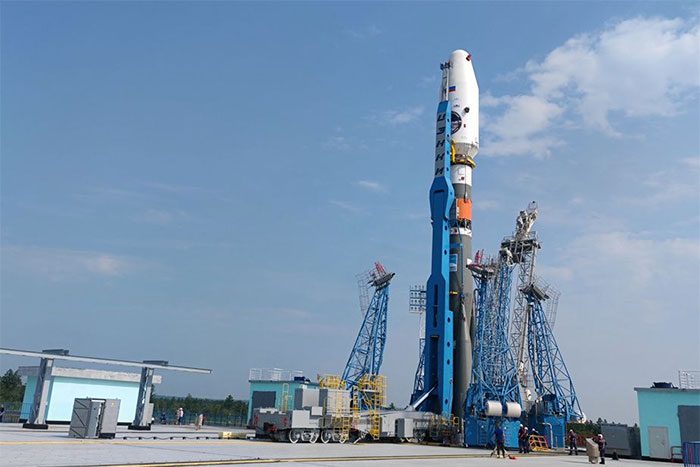Russia’s Luna-25 automatic probe is scheduled to soft-land in the Moon’s South Pole region on August 21.

The Soyuz 2.1b rocket carrying the Luna-25 lunar probe on the launch pad at Vostochny Cosmodrome, Russia, on August 8, 2023. (Photo: AFP/TTXVN)
According to Sputnik, Yuri Borisov, Director of the Russian State Space Corporation Roscosmos, announced on August 11: “We will wait until August 21. I hope for a successful soft landing on the Moon. This marks a new chapter in practical Moon exploration. We will carry out this work alongside our Chinese partners. This is the beginning of the first phase of a long-term lunar program.”
Earlier that morning, a Soyuz 2.1b rocket carrying the Luna-25 probe took off from Vostochny Cosmodrome in the Russian Far East, marking the first lunar mission launched in 47 years.
Roscosmos stated that the probe is expected to enter lunar orbit at an altitude of 100 km on August 16 and land softly in the polar region of the Moon near the northern Boguslawsky crater on August 21. According to Borisov, subsequent versions of Russia’s Luna probe are expected to be launched in 2027, 2028, and 2030.
The Roscosmos Director added that Russia and China will move towards the possibility of conducting manned missions to the Moon and establishing a lunar base after the successful launch of Luna-28 in 2030.
Borisov also mentioned that the results achieved by the Luna probe will serve as a springboard for deep space exploration and further planetary missions in the long term.
After landing, Luna-25 will collect lunar soil samples and analyze them for the presence of water ice. The main objectives of the mission will also include testing the latest designs of Russian space equipment.
Luna-25 is part of Russia’s lunar program aimed at exploring and utilizing the Moon and its orbit to establish an automated base.
Russia’s previous probe, Luna-24, was launched into space in 1976. This event entered the history of global space exploration when the samples taken from the Moon demonstrated the presence of water on Earth’s only natural satellite.




















































